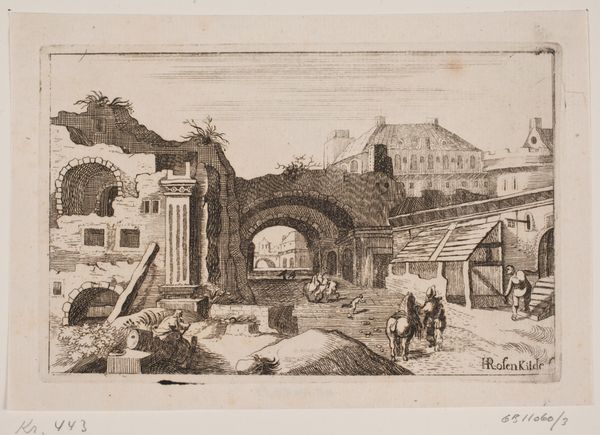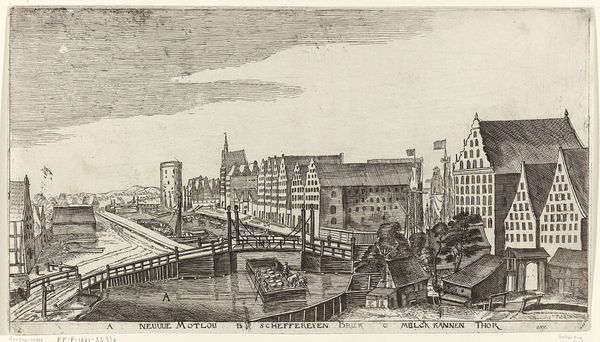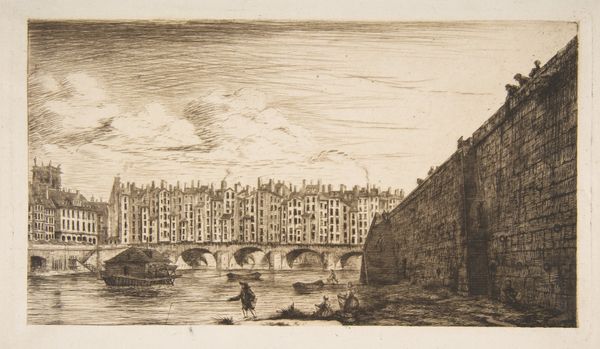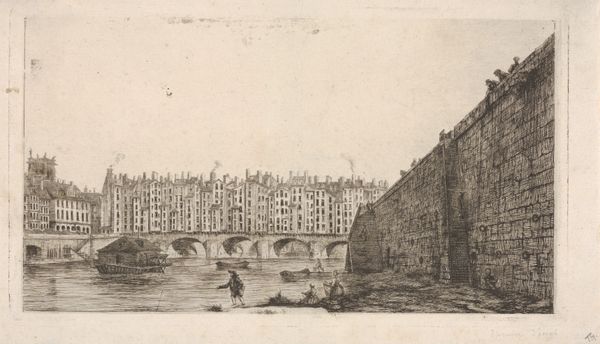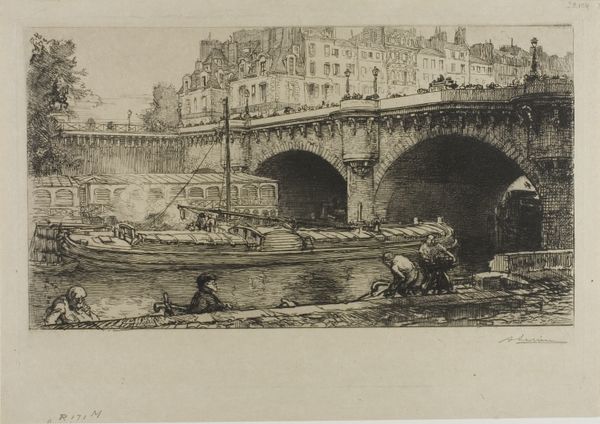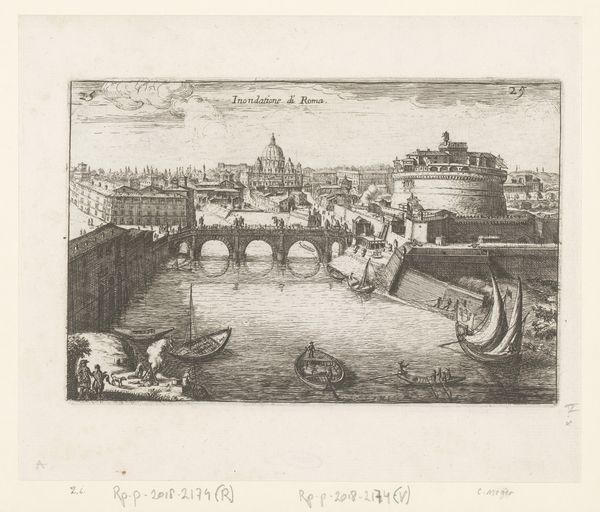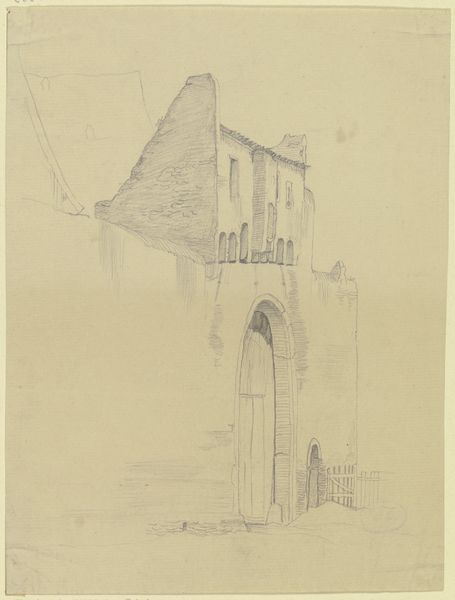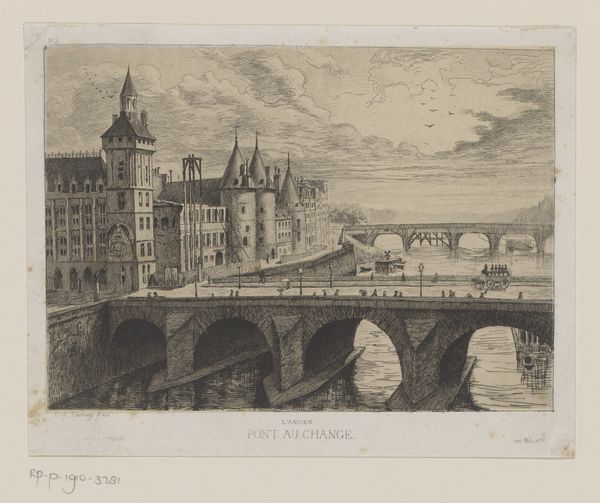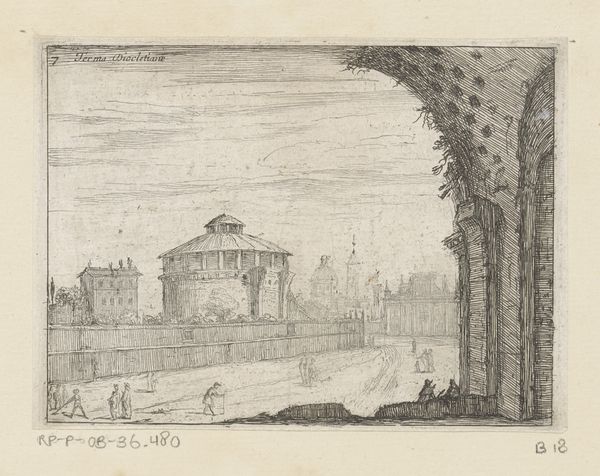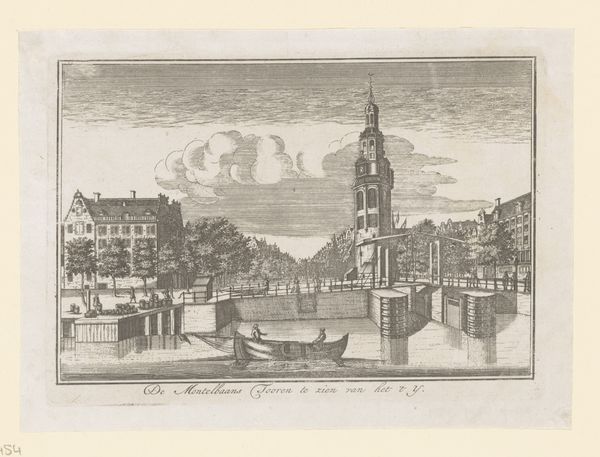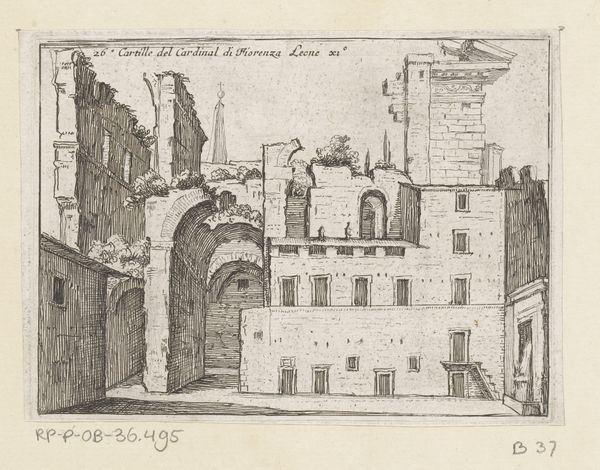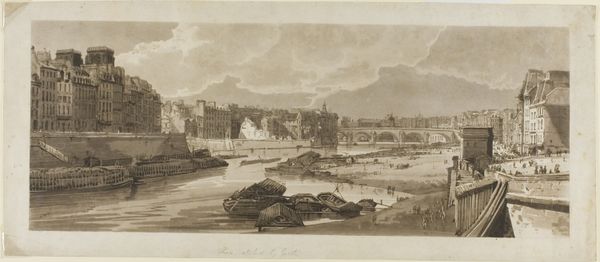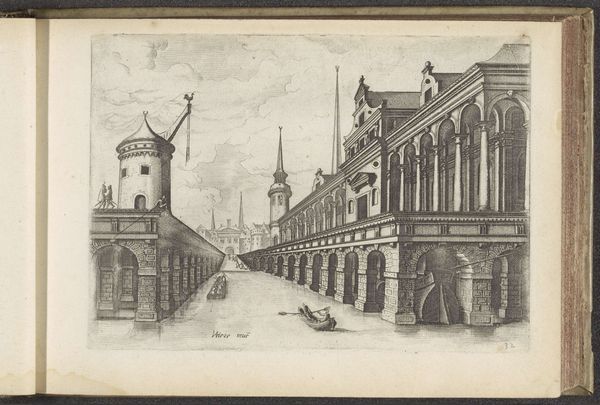
Dimensions: height 64 mm, width 99 mm
Copyright: Rijks Museum: Open Domain
Editor: Here we have "Fotoreproductie van een prent van Viaduc de Morlaix," a print by A. Taupin created sometime between 1860 and 1900. It's a cityscape dominated by this impressive viaduct. I’m immediately struck by the stark contrast between the industrial might of the viaduct and the smallness of the people below. How do you interpret this work? Curator: I see this image as a powerful statement on the rapid industrialization of the 19th century and its impact on lived experiences. The viaduct, a symbol of progress and connection, looms large, almost eclipsing the city itself. But what does this progress mean for the people depicted? Are they being connected or are they becoming less significant under these massive new infrastructures? Editor: That’s an interesting point! I hadn’t considered that the image could be read as critical of industrialization. Curator: The print aesthetic also invokes a sense of romanticism. Look at how the artist plays with light and shadow to create a somewhat idealized view of this rapidly changing world. Is the artist celebrating modernity or subtly mourning a disappearing way of life? Where do we see this sentiment represented elsewhere, and what historical threads connect this depiction of urban change? Editor: The boats docked in the foreground add a softer, almost nostalgic element, now that you point that out. It’s interesting to see this tension between the old and the new within the same frame. Curator: Exactly! The presence of those boats connects us to historical inequities tied to global trade that are so rarely questioned alongside these seemingly-objective scenes of progress. Can images like this become prompts for a reevaluation? To investigate what kind of historical context and social dynamics were embedded in its creation and the values they reproduce? Editor: That's really given me a new perspective on this seemingly straightforward cityscape! I learned that understanding art demands continuous questioning and connecting it with cultural history. Curator: Precisely, this print highlights how artistic representation can function as a lens for critical examination. Thank you, this was insightful for me too!
Comments
No comments
Be the first to comment and join the conversation on the ultimate creative platform.
